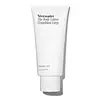What's inside
What's inside
 Key Ingredients
Key Ingredients

 Benefits
Benefits

 Concerns
Concerns

 Ingredients Side-by-side
Ingredients Side-by-side

Water
Skin ConditioningC13-15 Alkane
SolventPropanediol
SolventButylene Glycol
HumectantNiacinamide
SmoothingDicaprylyl Carbonate
EmollientPentylene Glycol
Skin ConditioningHydroxyethyl Acrylate/Sodium Acryloyldimethyl Taurate Copolymer
Emulsion StabilisingBetaine
HumectantHydroxyacetophenone
AntioxidantSodium Hyaluronate
HumectantGlycerin
HumectantTocopheryl Acetate
AntioxidantDurvillaea Potatorum Extract
HumectantCitric Acid
BufferingAscorbyl Tetraisopalmitate
AntioxidantXanthan Gum
EmulsifyingSorbitan Isostearate
EmulsifyingPolyglutamic Acid
Skin ConditioningDecyl Glucoside
CleansingLauryl Glucoside
CleansingAnthemis Nobilis Flower Extract
MaskingEucalyptus Globulus Leaf Extract
PerfumingLavandula Angustifolia Flower/Leaf/Stem Extract
MaskingCamellia Sinensis Leaf Extract
AntimicrobialPogostemon Cablin Leaf Extract
PerfumingMentha Viridis Extract
MaskingRose Extract
Skin ConditioningSodium Benzoate
MaskingPotassium Sorbate
PreservativeWater, C13-15 Alkane, Propanediol, Butylene Glycol, Niacinamide, Dicaprylyl Carbonate, Pentylene Glycol, Hydroxyethyl Acrylate/Sodium Acryloyldimethyl Taurate Copolymer, Betaine, Hydroxyacetophenone, Sodium Hyaluronate, Glycerin, Tocopheryl Acetate, Durvillaea Potatorum Extract, Citric Acid, Ascorbyl Tetraisopalmitate, Xanthan Gum, Sorbitan Isostearate, Polyglutamic Acid, Decyl Glucoside, Lauryl Glucoside, Anthemis Nobilis Flower Extract, Eucalyptus Globulus Leaf Extract, Lavandula Angustifolia Flower/Leaf/Stem Extract, Camellia Sinensis Leaf Extract, Pogostemon Cablin Leaf Extract, Mentha Viridis Extract, Rose Extract, Sodium Benzoate, Potassium Sorbate
Water
Skin ConditioningGlycerin
HumectantCaprylic/Capric Triglyceride
MaskingDicaprylyl Carbonate
EmollientShea Butter Glycerides
EmulsifyingSimmondsia Chinensis Seed Oil
EmollientNiacinamide
SmoothingCetearyl Olivate
Cetearyl Alcohol
EmollientGlyceryl Stearate
EmollientSorbitan Olivate
EmulsifyingPalmitoyl Dipeptide-5 Diaminobutyroyl Hydroxythreonine
Skin ConditioningPalmitoyl Dipeptide-5 Diaminohydroxybutyrate
Skin ConditioningPalmitoyl Hexapeptide-12
Skin ConditioningPalmitoyl Tetrapeptide-7
Skin ConditioningPalmitoyl Tripeptide-1
Skin ConditioningSclerocarya Birrea Seed Oil
HumectantCaryodendron Orinocense Seed Oil
EmollientLimnanthes Alba Seed Oil
Skin ConditioningTocopherol
AntioxidantLinoleic Acid
CleansingLinolenic Acid
CleansingPropanediol
SolventPolyacrylate Crosspolymer-6
Emulsion StabilisingCaprylhydroxamic Acid
Caprylyl Glycol
EmollientT-Butyl Alcohol
PerfumingOleic Acid
EmollientPalmitic Acid
EmollientStearic Acid
CleansingWater, Glycerin, Caprylic/Capric Triglyceride, Dicaprylyl Carbonate, Shea Butter Glycerides, Simmondsia Chinensis Seed Oil, Niacinamide, Cetearyl Olivate, Cetearyl Alcohol, Glyceryl Stearate, Sorbitan Olivate, Palmitoyl Dipeptide-5 Diaminobutyroyl Hydroxythreonine, Palmitoyl Dipeptide-5 Diaminohydroxybutyrate, Palmitoyl Hexapeptide-12, Palmitoyl Tetrapeptide-7, Palmitoyl Tripeptide-1, Sclerocarya Birrea Seed Oil, Caryodendron Orinocense Seed Oil, Limnanthes Alba Seed Oil, Tocopherol, Linoleic Acid, Linolenic Acid, Propanediol, Polyacrylate Crosspolymer-6, Caprylhydroxamic Acid, Caprylyl Glycol, T-Butyl Alcohol, Oleic Acid, Palmitic Acid, Stearic Acid
 Reviews
Reviews

Ingredients Explained
These ingredients are found in both products.
Ingredients higher up in an ingredient list are typically present in a larger amount.
Dicaprylyl Carbonate comes from carbonic acid and caprylyl alcohol, a fatty alcohol. It is an emollient and gives skin a velvet feel. The sources of Dicaprylyl Carbonate may be synthetic or from animals.
As an emollient, Dicaprylyl Carbonate creates a film on the skin. This film traps moisture in, keeping your skin soft and hydrated.
Glycerin is already naturally found in your skin. It helps moisturize and protect your skin.
A study from 2016 found glycerin to be more effective as a humectant than AHAs and hyaluronic acid.
As a humectant, it helps the skin stay hydrated by pulling moisture to your skin. The low molecular weight of glycerin allows it to pull moisture into the deeper layers of your skin.
Hydrated skin improves your skin barrier; Your skin barrier helps protect against irritants and bacteria.
Glycerin has also been found to have antimicrobial and antiviral properties. Due to these properties, glycerin is often used in wound and burn treatments.
In cosmetics, glycerin is usually derived from plants such as soybean or palm. However, it can also be sourced from animals, such as tallow or animal fat.
This ingredient is organic, colorless, odorless, and non-toxic.
Glycerin is the name for this ingredient in American English. British English uses Glycerol/Glycerine.
Learn more about GlycerinNiacinamide is a multitasking form of vitamin B3 that strengthens the skin barrier, reduces pores and dark spots, regulates oil, and improves signs of aging.
And the best part? It's gentle and well-tolerated by most skin types, including sensitive and reactive skin.
You might have heard of "niacin flush", or the reddening of skin that causes itchiness. Niacinamide has not been found to cause this.
In very rare cases, some individuals may not be able to tolerate niacinamide at all or experience an allergic reaction to it.
If you are experiencing flaking, irritation, and dryness with this ingredient, be sure to double check all your products as this ingredient can be found in all categories of skincare.
When incorporating niacinamide into your routine, look out for concentration amounts. Typically, 5% niacinamide provides benefits such as fading dark spots. However, if you have sensitive skin, it is better to begin with a smaller concentration.
When you apply niacinamide to your skin, your body converts it into nicotinamide adenine dinucleotide (NAD). NAD is an essential coenzyme that is already found in your cells as "fuel" and powers countless biological processes.
In your skin, NAD helps repair cell damage, produce new healthy cells, support collagen production, strengthen the skin barrier, and fight environmental stressors (like UV and pollution).
Our natural NAD levels start to decline with age, leading to slower skin repair, visible aging, and a weaker skin barrier. By providing your skin niacinamide, you're recharging your skin's NAD levels. This leads to stronger, healthier, and younger looking skin.
Another name for vitamin B3 is nicotinamide. This vitamin is water-soluble and our bodies don't store it. We obtain Vitamin B3 from either food or skincare. Meat, fish, wheat, yeast, and leafy greens contain vitamin B3.
The type of niacinamide used in skincare is synthetically created.
Learn more about NiacinamidePropanediol is an all-star ingredient. It softens, hydrates, and smooths the skin.
It’s often used to:
Propanediol is not likely to cause sensitivity and considered safe to use. It is derived from corn or petroleum with a clear color and no scent.
Learn more about PropanediolWater. It's the most common cosmetic ingredient of all. You'll usually see it at the top of ingredient lists, meaning that it makes up the largest part of the product.
So why is it so popular? Water most often acts as a solvent - this means that it helps dissolve other ingredients into the formulation.
You'll also recognize water as that liquid we all need to stay alive. If you see this, drink a glass of water. Stay hydrated!
Learn more about Water